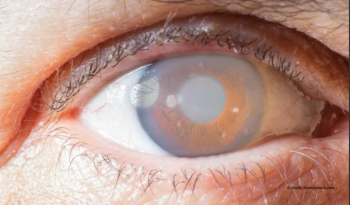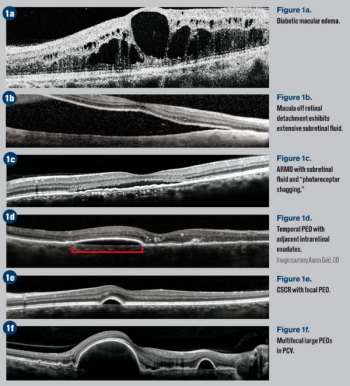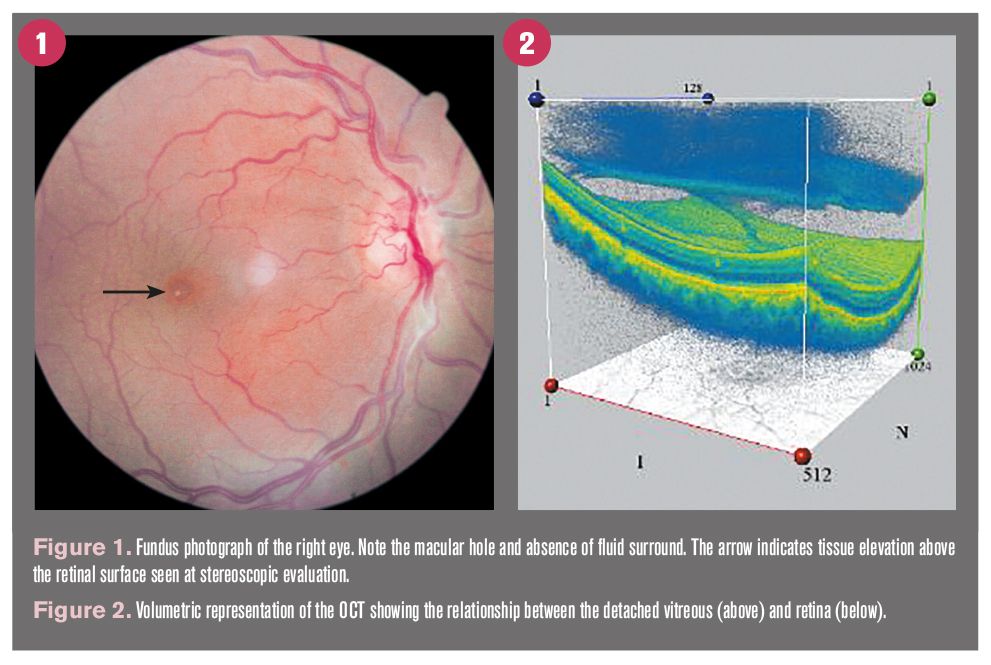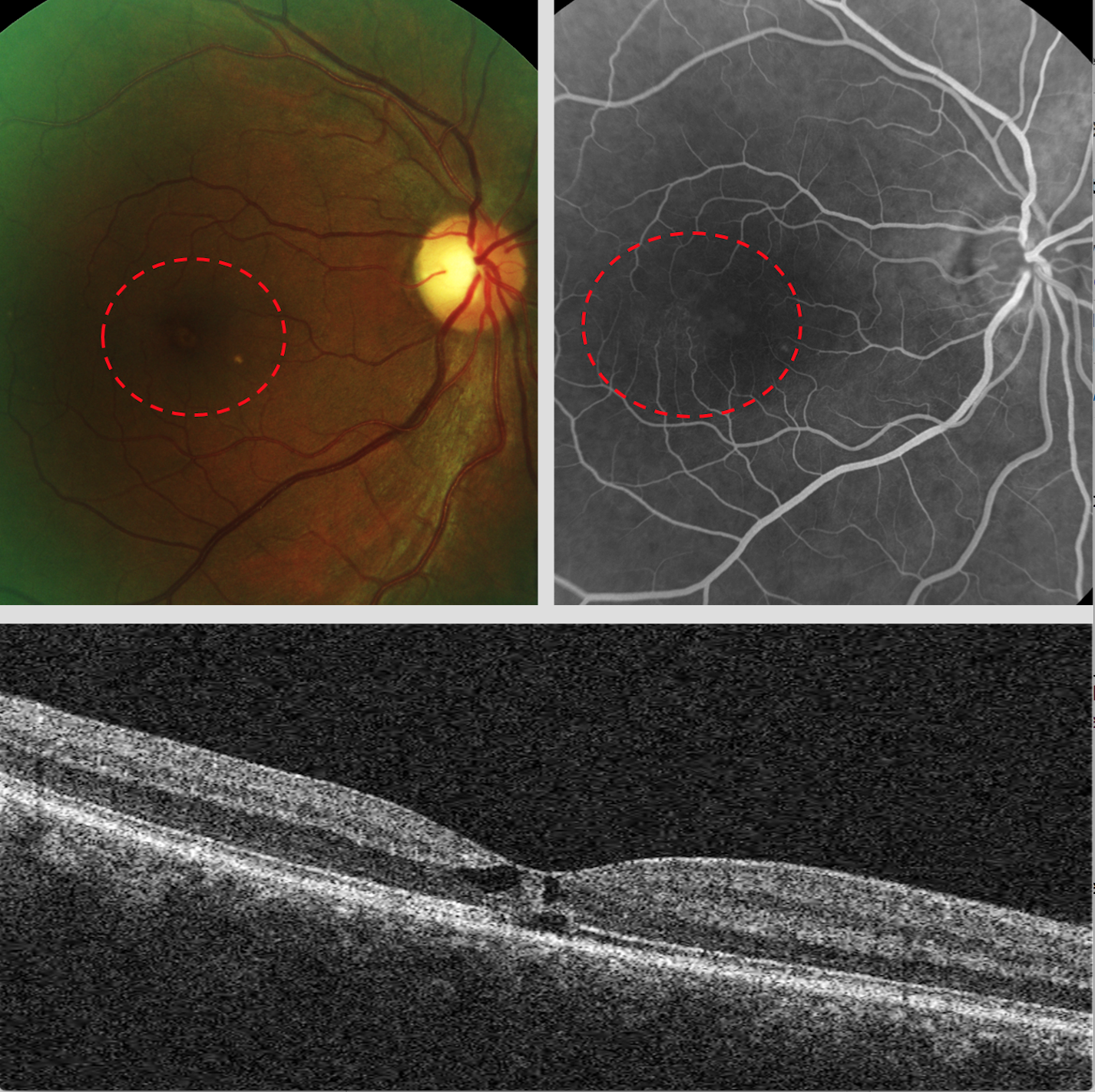
OCT
Latest News
CME Content



Diagnosing and treating diabetic macular edema (DME) can pose a challenge for ODs. A. Paul Chous, OD, MA, FAAO, CDE, examines a case of non-center involved DME and the challenges he faced when treating one patient.

The next patient sitting in your chair may have narrow angles. Find out how to best diagnose and manage patients with narrow angles; it can have a significant long-term impact on their visual outcome.

Spectral domain optical coherence tomography (SD-OCT) has grown in importance to optometric patient care. One OD shares her experience of moving from quarterly use of a rented device to purchasing an OCT for her small private practice and how it has improved clinical care and patient education.

Angioid streaks are a rare but potentially visually debilitating condition that present a unique challenge to the average eyecare provider. Learning to recognize its clinical presentation is just a start in an often difficult diagnosis to differentiate it from other similar retinal presentations. Ultimately understanding its association with a variety of systemic diseases is essential in successfully identifying and mitigating its link to vision loss.

Creating a partnership between the optometrists and retinal practices will enhance the care of patients and serve as a continuing source of education and reference for the OD community. This constant communication will help diabetic patients who are suffering from this multifactorial disease that affects their bodies. DR must be addressed from the optometrist’s point of view, retinal specialist’s point of view, and the primary-care physician’s point of view.

Times are changing, and the amount of information coming at us from all directions can easily be overwhelming. This information-whether true or false-is unrelenting and has increased in magnitude over the past five years. Part of it may be the natural progression of one’s career and the expansion of one’s network, but most of it is just the sheer volume that is at our fingertips.

Recognize characteristics and stages of macular hole for better pictures

Taking note of a patient’s behavior can provide a multitude of clues on the patient’s current condition. Perhaps the most apparent observational feature would be a patient’s gait.

I don’t have periscope eyes, so I can’t peek around blind corners. Plus, my neck is stiff after years of hunching over a slit lamp. As a result, I can’t turn my head as well to get a good look around.

When I was a resident at the SUNY College of Optometry, I was asked a to conduct a few patient question and answer sessions regarding glaucoma. The sessions consisted of me sitting with a small group of patients, family members, or whoever wanted to know more about glaucoma.

The patient noticed the symptoms while suffering from fever secondary to hand, foot, and mouth disease.

Complex contact lenses, including scleral lenses, have unique fitting considerations that may be augmented with additional optic scans, says Jeffrey Sonsino, OD, FAAO, of Nashville, TN, at SECO 2017.

OCT is one of the best way to assess patients for the presence of diabetic macular edema (DME)

Let’s examine what this specific (and separate) scan pattern can offer diagnostically

Try these seven strategies to improve your keratoconus contact lens fitting and offer better outcomes to your patients.

Specialty testing is performed for diagnostic purposes, observation of disease processes, and treatment plans

Effectively manage patients through diagnosis and interpretation

Optometry has widely adopted optical coherence tomography (OCT) as a mainstay in diagnosing and managing ocular disease since its advent in the 1990s

One thing that we always liked about our mentors is that they never looked at a problem from just one angle

Scientific research, new products, and industry announcements kicked off the 95th annual meeting of the American Academy of Optometry (AAO)

Scientific research, new products, and industry announcements kicked off the 95th annual meeting of the American Academy of Optometry (AAO)

Can we talk a few minutes about ultra-widefield imaging (UWF) without another kind of UWF (ultra-widespread fighting) breaking out?

Ben Gaddie, OD, FAAO, Optometry Times Editorial Advisory Board member, noted several specific areas that were advancing to give ODs better data and better control over patient health outcomes, including: • Corneal mechanics • 24-hour IOP monitoring • New glaucoma drugs and drug delivery systems • Advancements in OCT imaging













































.png)


